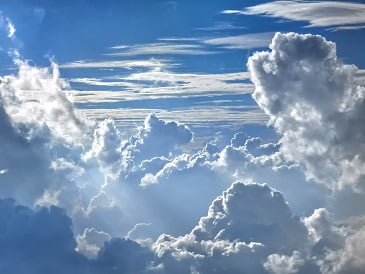What does heaven look like? People have been trying to imagine what heaven looks like, the eternal dwelling place of souls who, when living their earthly life, were good. There are various portrayals of heaven, different religions and cultures have depicted it as a place full of beauty, tranquility, and recompense. Of course, the specifics of it are still unknown but it’s possible to investigate some of the main notions about the wonderful place where believers are supposed to go.
Descriptions Across Religions
The paradise in Christianity and Islam is described as a garden with an enclosed real or plantation. We also see descriptions of the literal garden of the Lord, planted with trees that yield fruit, with rivers and stones of great worth. According to Islamic teachings, there are gardens of Eramani which include green gardens, rivers of water, shades, and tasty fruits. In both of the faiths, the concept of paradise is considered to be a state of absolute perfection.
As for the beliefs about the afterlife, Buddhism and Hinduism do present several tiers of heaven where souls may move depending on their behavior in life and the karma they create. The peak realms are featured as regions of beauty, enjoyment, and comfort that are intended for deserving individuals. Lower realms are still hard for souls that are yet in the process of gradual development in their spiritual evolution.
In all these religions, pictures of angels, saints, peace and light dominate. Heaven is portrayed as a pure and divine abode for spirits, and souls that have been redeemed. The legends also claim that anyone who is given a favorable verdict will live eternally, beyond the human realm’s ability to imagine satisfaction in the presence of the gods.
Common Descriptions and Symbols
Despite the many interpretations across cultures, some common themes emerge in depictions of heaven:
- Radiant Light: They depict heaven as a place, shining brightly like a light to represent God, the light of truth, and the light of wisdom. This light brings heaven and all the inhabitants of heaven nothing but sheer happiness and divine blessing.
- Beauty and Nature: Heavenly realms are portrayed (Graphic by Owen Jones)ed by all cultures as beautiful palaces full of life and natural beauty like rivers, meadows, flowers, and trees full of precious stones. This grandiosity represents life, growth, and regeneration.
- Contentment and Fulfillment: Sorrow, suffering, and suffering are all absent from the joys of heaven for those who are fortunate enough to get there. The faithful are ensconced in their reward and require nothing; their contentment is complete.
- Community With Loved Ones: The love of family and friends who have passed before is a longing that is easily captured by many when they consider what heaven may hold for them. The concept of heaven is of being greeted by loved ones for all of eternity; all is well in heaven.
- The Presence of Divinity: All the imaginations of paradise locate God or other superior supernatural powers at the heart of the entire system. To be in heaven is to be immersed in grace and power by the divine that spans for eternity in the form of music, light, wisdom, or love.
What Does Heaven Look LikeDoes Heaven Exist?
What heaven is in its true sense nevertheless is still an enigma veiled within numerous myths and metaphors. The visions between different religions may be more an indication of man’s imagination and aspiration than a revelation of any truth. However, the thirst for a happy afterlife remains a popular expectation of many people to this day. Despite these points remaining rather vague, the call to become closer to God to spend eternity in a heavenly paradise with deity remains a powerful message that encourages people to follow virtues and live righteously.
Conclusion
What does heaven look like? Some people may never know even if it exists, its location, or what is inside it, whether it is a heavenly map or heavenly items. However, as in many other cultures, the images can suggest some similarities regarding the possible bliss of eternity. Cross-cultural similarities are found in mythologies about bright places in which people’s spirits are at one with their deity and free from suffering. Two millennia after the first scriptural images of this concept, people remain influenced by the presentation of the world and beliefs about life, death, and spirituality. The lure remains not because one needs paved streets of gold or trees of opulence in diamonds – but because heaven’s core is based on unchanging common dreams of beauty, harmony, love, and eternal beauty.
Divine Wordsmith is a spiritual guide and writer, weaving tales of wisdom and insight to inspire inner growth and connection to the divine. Join the journey of self-discovery and enlightenment through the transformative power of words.




